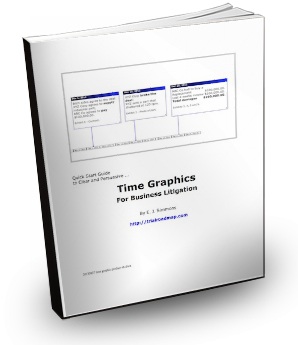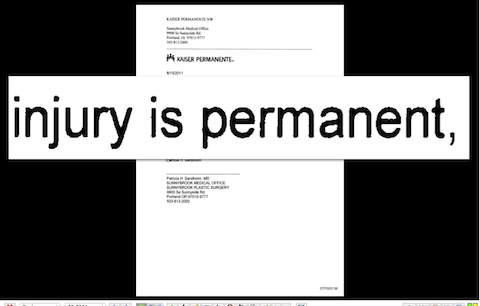A four-day trial resulted in a finding that an amendment to a trust, disinheriting my client, was the result of undue influence. The trust amendment was invalidated and this restored the effect of the former trust; the disinherited long-term friends (the de facto family of the decedent) were restored as the 100% beneficiaries of the estate.
Probate litigation is decided by the Judge, not by a jury. Nevertheless, visual presentation is effective to either a Judge or to a jury. Trial presentation software gives an advantage to the lawyers who use it to make points both orally and visually. Instead of merely talking about a fact, it is far better to say, “Look at this”.
Most trials are done without sufficient images. We used trial presentation software to show both the logic, and to show the emotional history between the client and the decedent.
Near the beginning of opening statement, a document exhibit was projected on the screen. Then the relevant words were zoomed in on, using the software. As a practical matter, in 30 seconds this disposed of an issue the other side was relying on.
Our side displayed lots of photos and letters and holiday cards from over the years, proving the nature of the long-term relationship with our client.
We displayed time charts to show the sequence of events, to highlight the circumstantial evidence of undue influence.
Using a Time Chart in Probate Litigation
As experienced trial lawyers know, closing is generally insignificant, because the finder of fact has usually decided the case by then. Nevertheless, two images put up during closing argument made our side’s case very clear.
The first image was side-by-side photos to show a contrast in the decedent’s appearance. The second was a time chart, with an un-shortened time axis, to show the sequence of events near death. These images were intended to clarify what could have been a jumble of facts.
During closing, the Judge asked a question about the sequence of events near death. It was easy to walk over to the time chart to point out that the start of the period of undue influence was before the sequence of events leading to the change in beneficiaries. I make available for sale a brief report for lawyers about how to use time charts in trial.
How to Prove Undue Influence
To invalidate a will or a trust because of undue influence requires a confidential relationship, and one or more “suspicious circumstances”.
In a confidential relationship, one person trusts the other to act in her best interests, and relies on the other to meet her needs. Once a confidential relationship is established, “slight evidence is sufficient to establish undue influence.” In re Reddaway’s Estate, 214 OR 410, 420 (1958). Add one or more suspicious circumstances, and an inference of undue influence arises that the respondent must rebut.
The burden shifts for a reason: because undue influence occurs behind closed doors, out of sight.
“… cases of this type ordinarily must rest upon circumstantial evidence.” In re Reddaway’s Estate, 214 Or. 410, 427 (1958)
The Reddaway factors for suspicious circumstances include:
- Unexplained change in donor’s attitude.
- Change in plan for disposition of estate.
- Unnatural or unjust gift.
- Secrecy and haste.
- Susceptibility to influence.
The clarity of visual presentation makes circumstantial evidence more persuasive.
If you have a will contest or trust contest to discuss, you are invited to call E. J. Simmons at (503) 221-2000.



